
By Judy Carmack Bross
 Ward Miller, Executive Director of Preservation Chicago; Driehaus Museum Interim Executive Director, Lisa M. Key; Driehaus Museum Board of Trustees President, Zachary Lazar and architect Joseph M. Antunovich, Photo: Jeremy Lawson Photography
Ward Miller, Executive Director of Preservation Chicago; Driehaus Museum Interim Executive Director, Lisa M. Key; Driehaus Museum Board of Trustees President, Zachary Lazar and architect Joseph M. Antunovich, Photo: Jeremy Lawson Photography
“Nature is a big book from which we can draw inspiration,” — Hector Guimard.

Courtesy Cercle Guimard
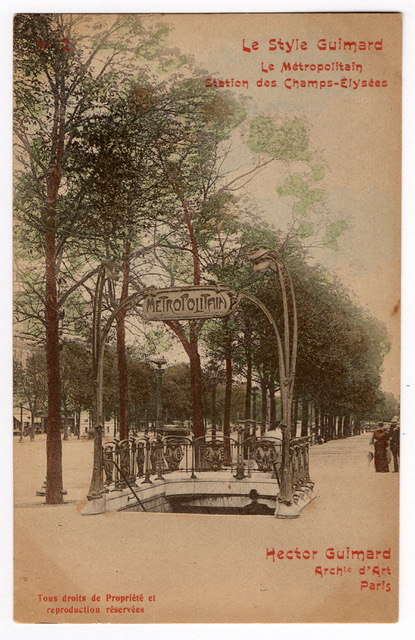
Paris Metro Station, Courtesy Cercle Guimard
Hector Guimard: Art Nouveau to Modernism, the first American exhibition since 1970 on Guimard, the French architect now known primarily for his Paris Metro designs, has brought back to Chicago one of its most celebrated curators and art historians David Hanks who served as the exhibition’s consulting curator.
Formerly an Associate Curator for American Decorative Arts at the Art Institute of Chicago and currently curator for the Stewart Foundation in Montreal where he will open an exhibition on design by women next year, Hanks greeted guests at the recent exhibition preview. He worked closely with the Museum’s founder Richard H. Driehaus on an early museum exhibition of his famed Tiffany glass collection. Before his death, Driehaus paid tribute to Hanks in the foreword to the exhibition’s catalogue for developing the concept, theme and exhibition checklist. Hanks, who lives in both Montreal and New York, and his co-curator Sarah Coffin, curator at the Cooper Hewitt, Smithsonian Design Museum, worked on the exhibition for three years.

Curator David Hanks at the entrance to Guimard’s Castel Beranger in Paris
Held at both the Driehaus Museum–the former Nickerson Mansion–and the Cooper Hewitt, the home of Andrew Carnegie built in 1902–the exhibition has the added benefit of house museum surroundings which in each ornate room welcome the intoxicating plantlike shapes developed by Guimard. Examples of Guimard’s architecture, furnishings and decorate arts soar in Chicago’s only remaining Gilded Age mansion. Bringing together furniture and design objects including jewelry, metalwork, ceramics, drawings, and textiles from collections worldwide, the show runs through November 5.
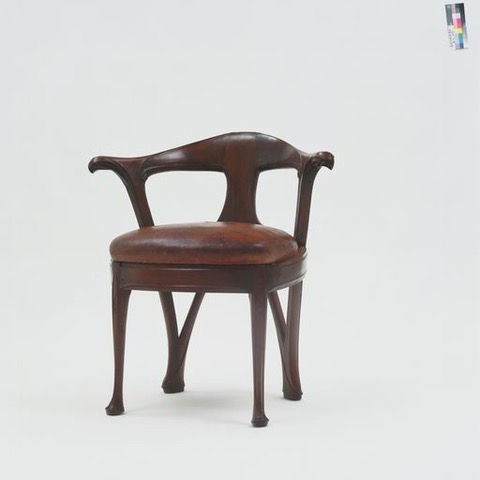
Guimard armchair, MoMA collection

Guimard ring, MoMa collection
Hanks told us this week:
“The Driehaus is one of the most important examples of the Gilded Age era, much like the Vanderbilt mansion and others in New York that are gone. It is rare that the interior is intact and preserved so well as at the Driehaus. People love the intimate aspects of a show in a house museum where you are not overwhelmed by hundreds of objects at a huge museum blockbuster show.”

Curator David Hanks; Matilda McQuaid. Acting Curatorial Director, Cooper Hewitt, Smithsonian Design Museum; Ted Burger, Director of Collections, Driehaus Enterprise Management, Inc. and Joyce Lee
“Guimard was not only a visionary architect but also quite revolutionary in all aspects. His entrepreneurial approach, mastery of self promotion and his utilization of industrial technology and mass production created economies of scale. Furthermore he accepted projects for the social good, including affordable housing,” Hanks said. “He believed in the total work of art, bringing together architecture, furnishings and decorative arts.. He was very modern in his thinking, branding le Style Guimard.”
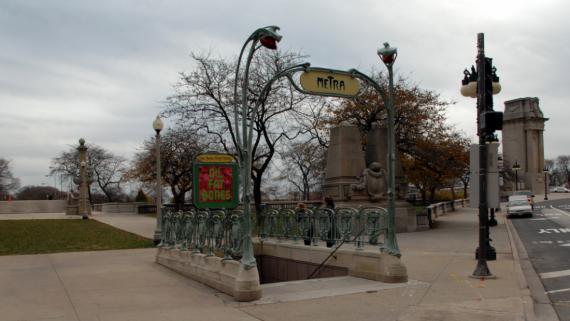
Chicago Metra entrance
Art Nouveau was first introduced to an international audience in 1900 at the Exhibition universelle, representing an aesthetic break from the classical and revival styles of the nineteenth century. Early on, Guimard had been influenced by the British Arts and Crafts movement. Paris Metro stops were built between 1900 and 1912 and Art Nouveau was also called Art Metro. The Grant Park example of the Paris Metra stop was created using an original cast by Guimard.
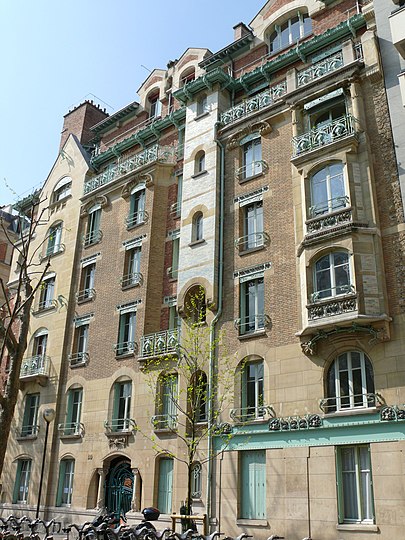
Castel Beranger
“Although he did custom designs for wealthy clients, he wished to make his designs available through mass production, to put the beautiful in reach of everyone,” Hanks said. “His works combine natural materials, wrought iron, concrete, cast iron, bricks and concrete blocks. There are several of his ornate balcony railings in the show. It also includes two beautiful stone vases, almost 52 inches tall, which he did for Sevres, known as the Vase des Binelles. There are only three remaining of the five that were made originally.”

Adeline and Hector Guimard
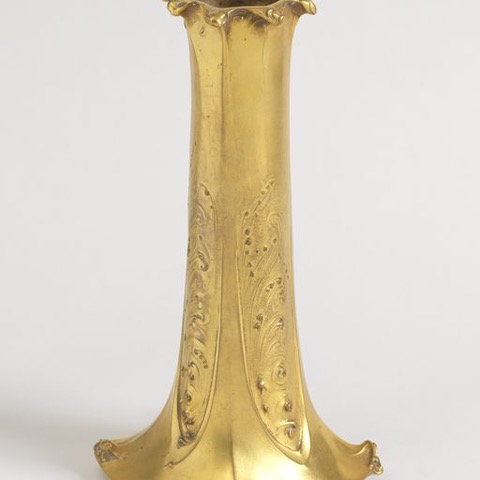
Vase, Hotel Guimard, Paris, Courtesy of the Cooper Hewitt, Smithsonian Design Museum
After marrying a wealthy New Yorker Adeline Oppenheim in 1909, he built their dream home, Hotel Guimard on Rue Mozart in Paris. Much like Frank Lloyd Wright, Guimard insisted on designing everything including table linens, furniture, carpeting and more. In 1938 the Guimards left Paris as World War II loomed, due of her Jewish ancestry and his liberal activism. They moved to New York. He died in 1942 at the Adams Hotel on 86th near Fifth Avenue. Due to his poor health Guimard hadn’t been able to work in the United States. “Following her husband’s death his wife devoted herself to promoting his legacy making important gifts to American and French Museums. She lived long enough to see a revival of interest in Art Nouveau.” Hanks said.
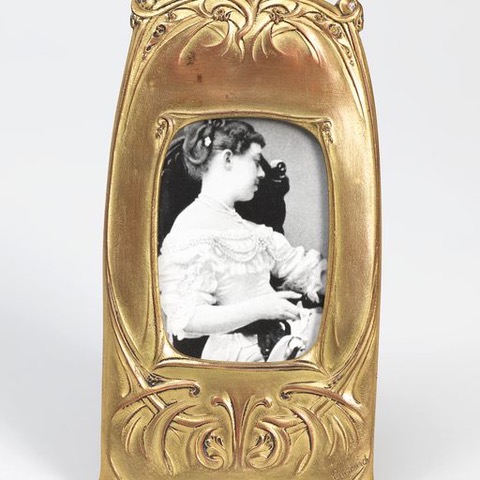 Courtesy of the Cooper Hewitt, Smithsonian Design Museum
Courtesy of the Cooper Hewitt, Smithsonian Design Museum

Interim Executive Director, Lisa M. Key, and the Driehaus Museum Board of Trustees President, Zachary Lazar, Photo: Jeremy Lawson Photography

Adele Silver (left) and Deborah Lader with David Hanks, Photo: Jeremy Lawson Photography

Photo: Jeremy Lawson Photography
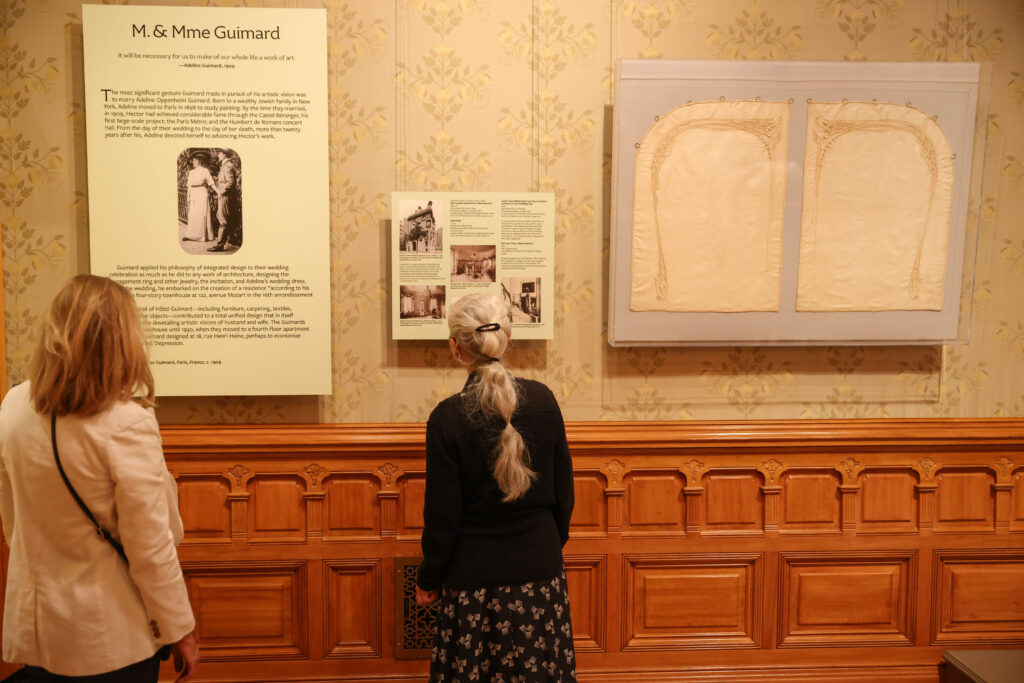
Photo: Jeremy Lawson Photography
For more information about the Guimard Exhibition visit:
driehausmuseum.org







